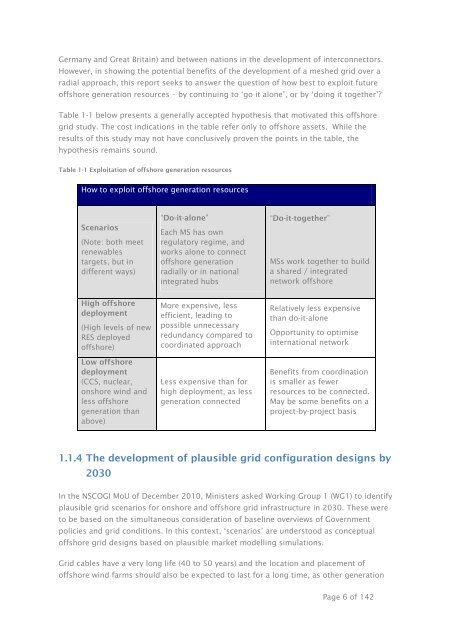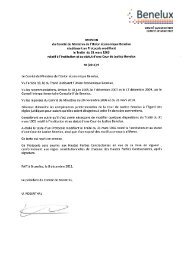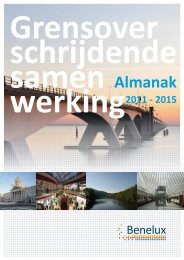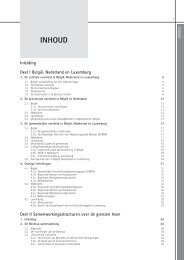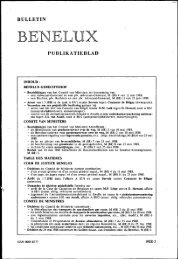The North Seas Countries' Offshore Grid Initiative - Initial ... - Benelux
The North Seas Countries' Offshore Grid Initiative - Initial ... - Benelux
The North Seas Countries' Offshore Grid Initiative - Initial ... - Benelux
You also want an ePaper? Increase the reach of your titles
YUMPU automatically turns print PDFs into web optimized ePapers that Google loves.
Germany and Great Britain) and between nations in the development of interconnectors.<br />
However, in showing the potential benefits of the development of a meshed grid over a<br />
radial approach, this report seeks to answer the question of how best to exploit future<br />
offshore generation resources – by continuing to ‘go it alone’, or by ‘doing it together’?<br />
Table 1-1 below presents a generally accepted hypothesis that motivated this offshore<br />
grid study. <strong>The</strong> cost indications in the table refer only to offshore assets. While the<br />
results of this study may not have conclusively proven the points in the table, the<br />
hypothesis remains sound.<br />
Table 1-1 Exploitation of offshore generation resources<br />
How to exploit offshore generation resources<br />
Scenarios<br />
(Note: both meet<br />
renewables<br />
targets, but in<br />
different ways)<br />
High offshore<br />
deployment<br />
(High levels of new<br />
RES deployed<br />
offshore)<br />
Low offshore<br />
deployment<br />
(CCS, nuclear,<br />
onshore wind and<br />
less offshore<br />
generation than<br />
above)<br />
“Do-it-alone”<br />
Each MS has own<br />
regulatory regime, and<br />
works alone to connect<br />
offshore generation<br />
radially or in national<br />
integrated hubs<br />
More expensive, less<br />
efficient, leading to<br />
possible unnecessary<br />
redundancy compared to<br />
coordinated approach<br />
Less expensive than for<br />
high deployment, as less<br />
generation connected<br />
“Do-it-together”<br />
MSs work together to build<br />
a shared / integrated<br />
network offshore<br />
Relatively less expensive<br />
than do-it-alone<br />
Opportunity to optimise<br />
international network<br />
Benefits from coordination<br />
is smaller as fewer<br />
resources to be connected.<br />
May be some benefits on a<br />
project-by-project basis<br />
1.1.4 <strong>The</strong> development of plausible grid configuration designs by<br />
2030<br />
In the NSCOGI MoU of December 2010, Ministers asked Working Group 1 (WG1) to identify<br />
plausible grid scenarios for onshore and offshore grid infrastructure in 2030. <strong>The</strong>se were<br />
to be based on the simultaneous consideration of baseline overviews of Government<br />
policies and grid conditions. In this context, ‘scenarios’ are understood as conceptual<br />
offshore grid designs based on plausible market modelling simulations.<br />
<strong>Grid</strong> cables have a very long life (40 to 50 years) and the location and placement of<br />
offshore wind farms should also be expected to last for a long time, as other generation<br />
Page 6 of 142


